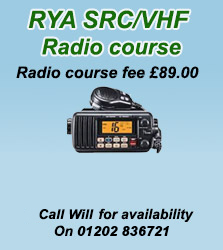
IRPCS – The rules of the road
International rules for the prevention of collisions at sea. Quite a mouthful.
The usual way these are taught is pretty much by rote. There are 38 separate rules covering the way boats should interact by day, night and in reduced visibility. The RYA teaching syllabus states that, as a minimum, students should understand and be able to apply rules 5,6,7,8,9,10,and 12.
Since we are all powerboaters in craft shorter than 24m, there is a simpler and more effective way to understand what is expected of you. It goes like this:

Big Ships, whatever type they are, look down on all other boats and do not give way to sailing boats or Powerboats under any circumstances.
Sailing boats look up to big ships and do give way to big ships, but look down on powerboats and never give way to them.
Powerboats (Us) look up to big ships and sailing boats and give way all to of them in all places.
There is, however, one wrinkle – As we all know, sailors can be sneaky and they very often pretend to be a sailing boat when they are really a powerboat. If a sailing boat is using its engine to make way, i.e. help it go, then, even if it has some or all of its sails up, IT IS A POWERBOAT.
When sailors use their engine, they are supposed to show that they are by displaying an upside down cone on their forestay (the wire that runs from the top of the mast to the bow). Like so:

If you ever see one, use the Forum on this site to let me know, preferably with the boats name so we can start a register of good sailors.
Next, you need to know how to keep out of the way. The basic rule is simple, always pass behind. Do not try to ‘nip across in front’ because it will unsettle the skipper of the vessel you are avoiding and one day, your 40kn craft will decide to have a fuel problem and fall back into limp-home mode just as you draw level with the bow wave of a super tanker.
You should, of course, take account of the positions of other boats as you plan your avoiding action. So if you want an easy life, take avoiding action early and make your manoeuvre obvious.
Powerboat meets Powerboat
Who has the right of way? Answer: no-one!
The regulations state it is everyone´s duty to avoid a collision. The rules are there to assist mariners, but if you meet someone who does not know or want to obey these rules, you must take avoiding action. If you don´t, and a collision follows, you will both be to blame.
Season 2023/24
Season 2023/24
Call Will for all boat training requirements on
01202 836721

Bespoke Tuition to suit your requirements, can also include crew training on your boat.
Call Will to discuss on
01202 836721
Our Details:
Saltwater Experience
Bailey Bridge Marina,
10 Bailey Drive,
Christchurch,
Dorset BH23 2BN
Tel: 01202 836721
Principal: Will Eveleigh
Chief Instructor: Lloyd James





